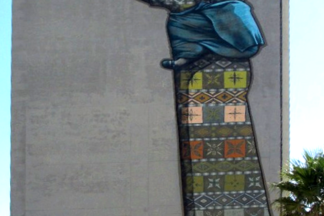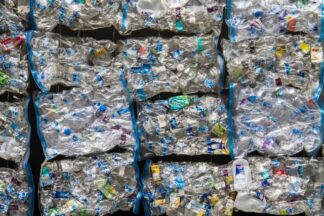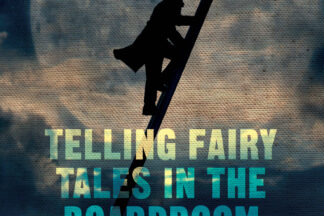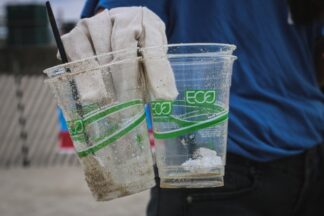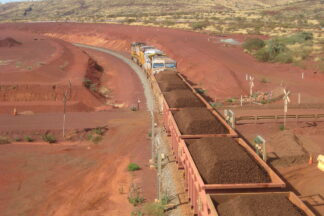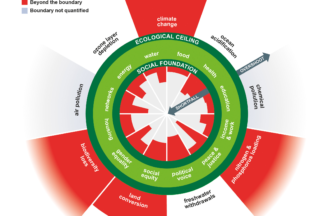On September 12 to 14, I attended the European Business Ethics Network (EBEN) yearly conference in Lille, France. The theme of this year’s edition was ‘License to Operate’.
I and my colleague Ilaria Pasquinelli, both presented a research paper, focused on sustainability and value generation in the fashion industry, and the status quo of knowledge on sustainable consumption habits respectively.
Supply chains, as a discipline of expertise, have come out of the hiding and recognise their role in reducing corporate risk. This is notably and specifically the case in fashion and textiles. At the same time, 'design' - not just in the creation room, but in all facets where it impacts the making, delivery and use of a product or service, is increasingly recognised as relevant.
As part of a workshop given at the Textile Exchange 2013 conference, we ran a small survey among workshop participants in order to find out more about their perception of and experience with Scenario Planning. Here the survey results.
Of the close to 500 eco-labels that exist worldwide, just over 100 apply to textiles, according to the Eco Label Index. Behind each label is, or should be, a standard that backs up the claim being made.
Given the prevalence of standards, the following questions arise: Why do standards exist? What value do they deliver? What are their limitations? What is ‘best practice’ for standards, their development process? What about the proliferation of standards?
The quality of governance is one of the key ingredients why projects, companies, and even governments fail in their tasks. It is also the key ingredient to achieve results, buy-in and participation. It is for this very reason that good governance was seen early on as one of the fundamental success factors for the Social Labor Convergence Project (SLCP).
Decisions in companies, brands, and businesses are never based either on a single argument, or the consequence of a single person’s ‘way’. Rather, companies have, to an extent, their own personality.
Key Question: a decision taken by this organisation – is it largely independent from, or a necessary consequence of, the decision(s) that the individuals within the organisation have taken?
The Manifesto of a Hummingbird: . 13 + 1 ways to make a stance for responsible business and leadership.
Unless the top line of company executives are held accountable for and judged by their contribution to the company’s risk management and mitigation efforts, including importantly CSR and sustainability performance, the company will struggle. Without senior commitment and engagement, the system only ever allows for minor ‘bug fixes’.
This post is going to be somewhat more personal than how I usually write. Normally, I try to write and argument as factually and data driven as possible. I’m not one that feels comfortable to carry my emotions on my sleeve. And even less as some of the topics I write about are truly important to me.
But: There are a couple of things that upset me in the present. They related to the #blacklivesmatter movement on the one hand, but maybe more specifically to the related discussion on #racism – globally.
-> Includes a list of practical resources for corporate boards
The cat is – long-time coming - finally left out of the bag: while drawing up a Covid19 recovery package, EU legislators have decided to introduce a levy on non-recycled plastic as per 1st of January 2020. Reading through the text, two points offer a considerable surprise: The short notice, the wording, and the focus on packaging.
But how come that legislators seem to drive the industry R&D agenda? Here a few questions for boards to ask their CEOs to get to the bottom of this.
Fairy tales are typically something for kids. Particularly young kids. Over the centuries they have been used to convey fundamental social mores, warnings from danger, and to inoculate a shared understanding of what ‘good’ and ‘bad’ looks like. These characteristics though make fairy tales an ideal, if very uncommon, vehicle to convey information and learnings also in management literature. This book hence is a rare find.
In mountaineering there are three distinct methods to handle the rope. Each technique has some distinct application characteristics. And as a consequence, a direct impact on the team work, team effectiveness - and even survival. What can boards learn from alpine roping techniques?
There are two approaches on how we can define of what is viable and desirable for our global economy.
In one, the 'soft attributes' and non-physical factors such as consumer desires, lifestyles or distribution of goods are a fixed attribute. In the other, quantifiable, physical attributes - amongst them natural resources - are fixed.
The challenge of boards in this time and age: Recognising that the first - the present - is failing. And outlining the path towards the second.
Greenwashing is defined as 'the expression of environmentalist concerns especially as a cover for products, policies, or activities'. There also exists Diversity-washing, Governance-washing, or skill-washing for example.
In itself a truly nasty thing, there is an unexpected upside to Greenwashing however: it will come back to haunt the greenwasher. Maybe not fast, but no doubt steadily. Just like the tortoise won the race against the hare.
On May 24th 2020 Rio Tinto blew up the Juukan Gorge rock shelters in Australia, which ancestors of the Puutu Kunti Kurrama and Pinikura (PKKP) people occupied over the course of 46’000 years.There are a multitude of lessons to be learned from the entire process that lead to the disastrous blast of a site of such archaeological importance. But also from how the scrutiny in its aftermaths and the have been.
Here a selection of just a few to think about.
Research has known for a while that when someone in your presence is trying to think, much of what you are hearing and seeing is your effect on them. That is also the case for boards.
Because: under the right conditions and circumstances, people will – invariably – think for themselves. Just: is that desired?
Consistency is one of those traits that is coveted by business journals and business leadership as possibly the most important ingredient in leaders. For a simple reason: Consistency — whether good or bad, positive or negative — provides the business, its employees, and stakeholders with a known quantity.
But what is often forgotten: A leader is never, ever made over night. It is a life long process. And just like a relationship, the accumulation and significance of small little things that are done over and over again is more often than not underestimated.
Over a decade ago, Simon Sinek pointedly demanded: Start with Why.
Targeted at a then rather uninspiring marketing and branding industry, 10 years on is still as valid as ever.
Just now, we need to ask businesses: Why are you bothering with investing millions, and thousands of hours into sustainability?
Often the answer will be: because we have to. An answer just as uninspiring as the sales slogans Sinek was bashing a decade ago.
Because when it comes to Sustainability: Know your genuine Why. Or don't bother.
In an earlier post I asked: How can business, a business, downscale the Doughnut and make it operational?
In this post I look at three tools that praise themselves of being either part, or even all, of the support a business needs on the journey to integrate the Doughnut Economics concepts. Namely: Science-based Targets (SBTs), the B Impact Assessment(BIA), and the Future Fit Business Benchmark (FFBBM).
What are their fundamental differences and similarities?
Are they indeed a tool to help on the path to keeping within the Doughnut boundaries?
An NGO comes after you – for the right or the wrong reasons.
A journalist publishes an article. The content: inconvenient truths, or equally inconvenient fake news.
Or simpler: The staff churn in your company is way above average. And no one seems to know why.
The meetings, the clashes, the disagreement, the blaiming that comes with it. Yes, been there, done that.
Thankfully, there were times I was not a party in the conflict. Instead I was assigned the (ungrateful?) task of figuring out how to resolve it, build bridges, and ‘get stuff done’. Not just once, but a few times.
What initially was of me ‘winging it’, over time – with trial and error – turned into something more structured. Still not perfect – it never will be, there is always room for improvement – but a flight-by-instrument rather than a blind adventure.
This post is my first try at illustrating, verbalising, this process.The steps I use, and what their intention is.
With the hope of it being as useful to others as it is and was to me.




